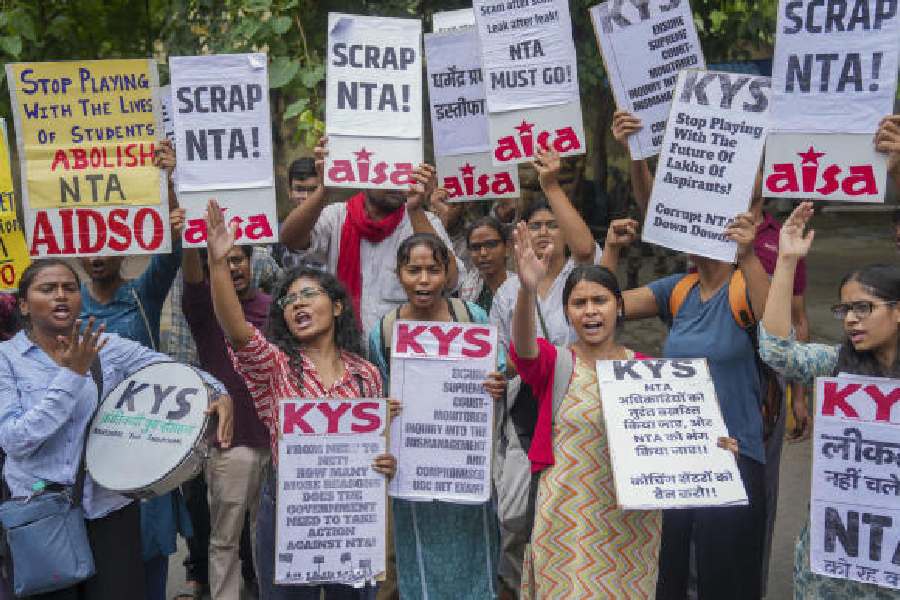The Himalayan Mountaineering Institute (HMI) in Darjeeling collected around 1.8 lakh litres of water through rain harvesting in the past four days underlining the importance of proper planning to harness rainwater for a water-scarce Darjeeling which ironically is one of the areas with highest rainfalls.
The average annual precipitation in Darjeeling is approximately 3,100 mm which is much higher than the average rainfall of Bengal at 1180 mm. Despite the more-than-adequate rainfall, much of Darjeeling’s water runs off the slopes without getting tapped.
The HMI, a famous institution as well as a tourist site, has to buy around 30,000 litres of water every day. “Out of this, 10,000 litres would be flushed through toilets,” said Group Captain Jai Kishan, principal, HMI.
Most major institutions like hotels and even many households in Darjeeling have to buy water that is sourced from the fringes of the town. Water is sold for anything between Rs 1 and 0.80 per litre.
The HMI, however, decided to set up a rain harvesting system in the institution.
The campus has 100 families with around 200 members. Also, around 6 lakh people visit the HMI annually.
“The rainwater which is collected from the roofs and stored in tanks is now piped to all buildings on the campus,” said Kishan.
The water is filtered through natural processes using sand, charcoal and stone.
“However, at the moment, the water is used for household works, laundry and in toilets,” said Kishan adding that plans were afoot to install water filters on the campus.
The initiative by the HMI has put the focus on proper planning for hill regions.
“The HMI’s initiative is welcome. A few other institutions like St Joseph’s School (North Point) and St Paul’s have been harvesting rain for many years. However, this initiative has not picked up probably because of a lack of policy and stringent rules,” said a former employee of the Darjeeling municipality.
Many argue that rain harvesting and parking spaces should be made mandatory for hotels, major buildings, complexes and bigger institutions before clearing building plans in Darjeeling.
“If initiatives such as those undertaken by the HMI are made mandatory, it could be a huge respite for the common residents of Darjeeling,” said a Darjeeling resident.

Small tanks and a pipe used for the filtration of rainwater
Many households in Darjeeling do harvest rain but given the lack of space, the collection is less. “It rains like cats and dogs in Darjeeling but it is a dichotomy that the town has to buy water from private water suppliers,” the resident added.
Civic sources said that during the dry period, the Darjeeling civic body on some days supplies only around 1.5 to 2 million gallons of water against a requirement of 8 million gallons.
Even if water is pumped from the Balason river — every hour of pumping provides around 3,30,000 gallons of water, the water does not reach every house in Darjeeling.
“This is because the biggest bane is the distribution system,” said a source in the civic body.
The present water distribution network was set up in the 1930s-40s and with the expanding population, the system has become haphazard. According to the 2011 census, the population of Darjeeling municipality area stands at 1,18,805, which is more than double the town's population of 57,603 in 1981.
“With every passing day, the number of piped connections has added to the haphazard connection,” said a former councillor.
Darjeeling municipality is currently implementing a ₹205 crore scheme to realign the distribution system.
The project under Atal Mission for Rejuvenation and Urban Transformation (AMRUT) entails setting up nearly two dozen tanks in Darjeeling town and reworking the supply lines. The project approved in 2016 is yet to be completed.










